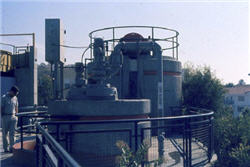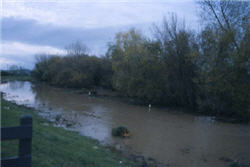Home » Resources » Putting A Price On Riparian Corridors As Water Treatment Facilities
Putting A Price On Riparian Corridors As Water Treatment Facilities
 Annualized cost of "brick and mortar" water treatment plant over 50 years is approx. $1,300,000 per year. Annualized cost of "brick and mortar" water treatment plant over 50 years is approx. $1,300,000 per year. |
 Annualized cost of protected and restored riparian aystems over 50 years is approx. $227,000 per year. Annualized cost of protected and restored riparian aystems over 50 years is approx. $227,000 per year. |
The monetary value of natural riparian environments that provide water quality treatment functions by processing nutrients, storing sediment, moderating temperatures, and other services can be estimated by calculating the costs associated with the construction of "brick and mortar" water treatment plants built to achieve similar functions. A demonstration urban runoff treatment plant built by the City of Santa Monica provides similar water quality services as a 4,000-5,000 lineal foot riparian corridor does, and has annualized costs of approximately $1.3 million per year ($2008) over a 50-year period.
These costs can be compared to the costs of protecting and/or restoring naturally functioning riparian systems. For example, a large, federally-funded, multi-objective urban flood damage reduction project with water quality benefits has costs that are approximately $967,600 per year ($2008). Other urban stream restoration projects for 5,000 lineal feet of stream with riparian habitat can range in cost from $1,900 for fencing projects to $227,000 per year for "typical" restoration projects annualized over 50 years ($2008). While most riparian restoration projects will provide benefits over a 100 year period or in perpetuity, the life spans of the structural plants are generally much shorter, thereby requiring significant replacement costs.
If it can be demonstrated that the water quality treatment services of a "brick and mortar" plant can be equated to similar services provided by naturally functioning riparian systems, then a cost comparison between the "brick and mortar" plant is not only illustrative, but may also provide a benefit measure that can be used to evaluate the economic efficiency of proposed habitat protection and/or restoration projects.
For more information, download the peer-reviewed paper here.
|

